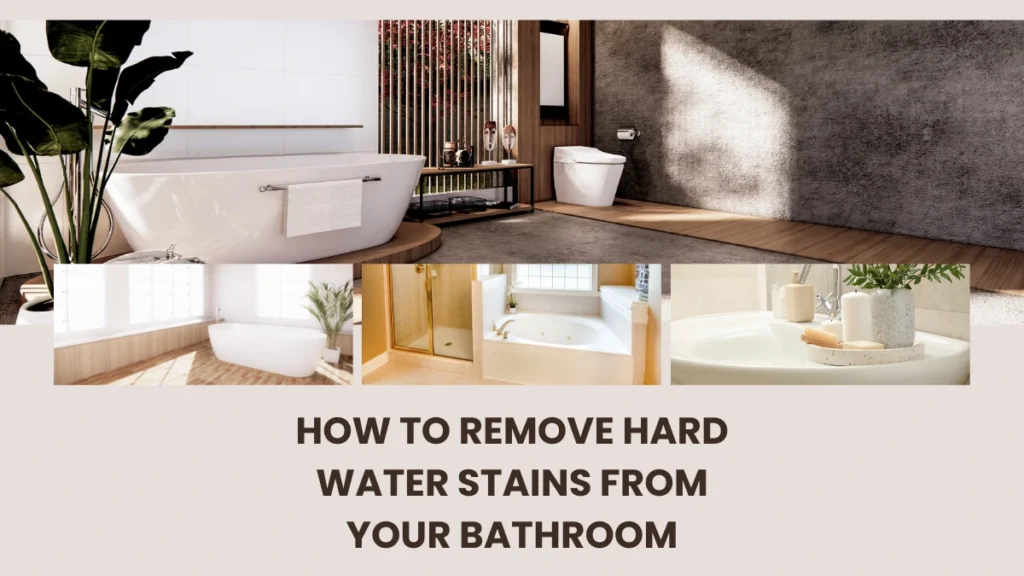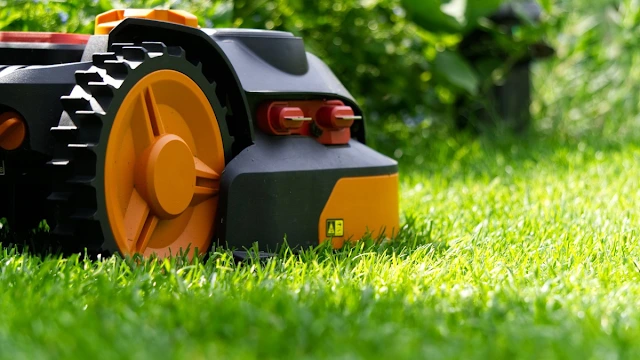
Hard water stains are a common issue in bathrooms. These stains form when water contains a high level of minerals, especially calcium and magnesium. As the water evaporates, it leaves behind mineral deposits. Over time, these can build up on surfaces, making your bathroom look dull and dirty. Removing hard water stains can be a challenge, but with the right approach, it is possible to keep your bathroom looking clean and fresh. In this guide, we will walk you through how to remove hard water stains from various bathroom surfaces.
What You’ll Need
Before you start, gather the following supplies:
| Items | Description |
| White vinegar | A natural acidic cleaner that helps dissolve mineral deposits from hard water. |
| Baking soda | A gentle abrasive that works well for scrubbing away tough stains. |
| Lemon juice | A natural alternative to vinegar, its acidity helps break down mineral buildup |
| Spray bottle | Useful for evenly applying cleaning solutions to large surfaces. |
| Microfiber cloth | Soft and non-abrasive, perfect for wiping surfaces without scratching. |
| Sponge | Great for scrubbing and applying cleaning solutions to various surfaces. |
| Soft-bristled brush | Ideal for scrubbing tiles, grout, and other textured surfaces. |
| Old toothbrush (for small areas) | Handy for cleaning tight spots, corners, and fixtures. |
| Plastic scraper (optional) | Helps gently scrape off stubborn mineral deposits without damaging surfaces. |
| Rubber gloves | Protect your hands from harsh cleaning solutions and dirt while scrubbing. |
1. Removing Hard Water Stains from Glass Shower Doors
Glass shower doors are one of the most common places where hard water stains appear. These stains can make your shower door look cloudy and dull.
Step-by-Step Process:
1. Mix a Cleaning Solution: Combine equal parts of white vinegar and water in a spray bottle. Shake well.
2. Spray the Glass Door: Spray the solution on the stained areas of the glass. Be sure to cover the entire surface with the solution.
3. Let It Sit: Allow the solution to sit for 10-15 minutes. The acidity of the vinegar helps break down the mineral deposits.
4. Scrub the Stains: Using a soft-bristled brush or a sponge, gently scrub the glass in circular motions. For tough stains, you can add a bit of baking soda to the sponge.
5. Rinse and Wipe: Rinse the glass with clean water and wipe it dry with a microfiber cloth to prevent new stains from forming.
6. Repeat if Needed: For stubborn stains, you may need to repeat the process until the glass is clear.
Pro Tip: To prevent future stains, use a squeegee after every shower to remove excess water from the glass.
2. Cleaning Hard Water Stains on Bathroom Tiles
Bathroom tiles, especially those in the shower, can also develop hard water stains. Over time, these stains can discolor the tiles and grout.
Step-by-Step Process:
1. Create a Vinegar Solution: Mix equal parts of white vinegar and warm water in a spray bottle.
2. Apply to Tiles: Spray the solution generously onto the stained tiles and grout. Allow it to sit for 10 minutes.
3. Scrub the Area: Use a soft-bristled brush or an old toothbrush to scrub the tiles and grout. For stubborn stains, sprinkle baking soda onto the brush before scrubbing.
4. Rinse with Water: After scrubbing, rinse the tiles with clean water.
5. Dry the Surface: Wipe the tiles dry with a clean cloth to prevent new stains.
Pro Tip: Apply a tile sealant to protect your tiles and grout from absorbing water and stains.
3. Removing Hard Water Stains from Faucets and Fixtures
Faucets and other metal fixtures are prone to hard water stains. These stains can make shiny surfaces look dull and dirty.
Step-by-Step Process:
1. Soak a Cloth in Vinegar: Soak a microfiber cloth in white vinegar and wrap it around the stained faucet or fixture. Secure it with a rubber band if needed.
2. Let It Sit: Leave the cloth on the faucet for 30 minutes to an hour. The vinegar will dissolve the mineral buildup.
3. Scrub the Fixture: After removing the cloth, use an old toothbrush or sponge to scrub away any remaining stains.
4. Rinse and Dry: Rinse the fixture with clean water and wipe it dry with a soft cloth.
Pro Tip: To keep your fixtures shiny, wipe them down after each use to remove water droplets.
4. Getting Rid of Hard Water Stains in Toilets
Hard water stains in the toilet can be quite stubborn and are often mistaken for dirt or rust.
Step-by-Step Process:
1. Pour Vinegar into the Bowl: Pour 2 cups of white vinegar into the toilet bowl. Allow it to sit for 30 minutes.
2. Scrub the Bowl: Use a toilet brush to scrub the stains. Focus on the areas where the water sits, as this is where stains tend to form.
3. Add Baking Soda: For tougher stains, sprinkle baking soda around the bowl and scrub again.
4. Flush the Toilet: Once you’ve scrubbed away the stains, flush the toilet to rinse the bowl.
5. Repeat if Necessary: If stains persist, repeat the process until the toilet is clean.
Pro Tip: To prevent stains, clean your toilet regularly and consider installing a water softener if hard water is a consistent problem.
5. Removing Hard Water Stains from Bathtubs and Sinks
Bathtubs and sinks can also be affected by hard water stains. These stains can make porcelain and ceramic surfaces look dirty and dull.
Step-by-Step Process:
1. Spray Vinegar Solution: Mix equal parts of white vinegar and water in a spray bottle. Spray the solution onto the stained areas.
2. Let It Sit: Allow the solution to sit for 10-15 minutes.
3. Scrub with a Sponge: Use a non-abrasive sponge to scrub the stains in circular motions. For stubborn stains, use a plastic scraper.
4. Rinse with Water: After scrubbing, rinse the surface with clean water.
5. Dry the Surface: Wipe the surface dry with a soft cloth to prevent future stains.
Pro Tip: Regular cleaning and wiping down after use can prevent stains from building up.
6. Preventing Hard Water Stains in the Future
Once you’ve cleaned your bathroom, it’s important to take steps to prevent hard water stains from coming back. Here are a few tips:
Install a Water Softener: A water softener can remove the minerals that cause hard water stains.
Wipe Down Surfaces: After using your shower, sink, or bathtub, wipe down the surfaces to remove any water droplets.
Use a Squeegee: Keep a squeegee in your bathroom to quickly remove water from glass shower doors after each use.
Regular Cleaning: Clean your bathroom regularly using vinegar-based solutions to keep hard water stains at bay.
FAQs:Remove Hard Water Stains from Your Bathroom
1. What causes hard water stains?
Hard water stains are caused by high levels of minerals like calcium and magnesium in the water. When the water evaporates, it leaves behind mineral deposits that form stains on surfaces.
2. Can I use lemon juice to remove hard water stains?
Yes, lemon juice is acidic and can help break down hard water stains. You can use it in place of vinegar for a fresh scent while cleaning.
3. How often should I clean to prevent hard water stains?
It’s best to clean your bathroom at least once a week to prevent hard water stains from building up. Regular cleaning helps keep surfaces looking fresh.
4. Can I prevent hard water stains without a water softener?
Yes, you can prevent hard water stains by wiping down surfaces after each use and regularly cleaning with vinegar solutions. Using a squeegee on glass doors also helps.
5. What should I do if the stains are too tough to remove?
For stubborn stains, you may need to repeat the cleaning process multiple times. You can also try using stronger cleaners designed for hard water stains, but always test on a small area first.
Conclusion
Hard water stains can be unsightly, but with regular cleaning and the right techniques, they are manageable. Using simple household ingredients like vinegar and baking soda, you can remove these stains from your bathroom surfaces and keep everything looking clean. Remember to clean regularly and wipe down surfaces to prevent the buildup of minerals.
Read More
https://cleaningview.ca/how-to-clean-your-bathroom-sink-and-faucets/
Important: The information provided here in the post is for general informational purposes only. It should not be taken as professional or any other type of advice. Always seek the advice of a qualified professional before implementing this information on your own. Thank you!
Add CleaningView To Your Google News Feed


